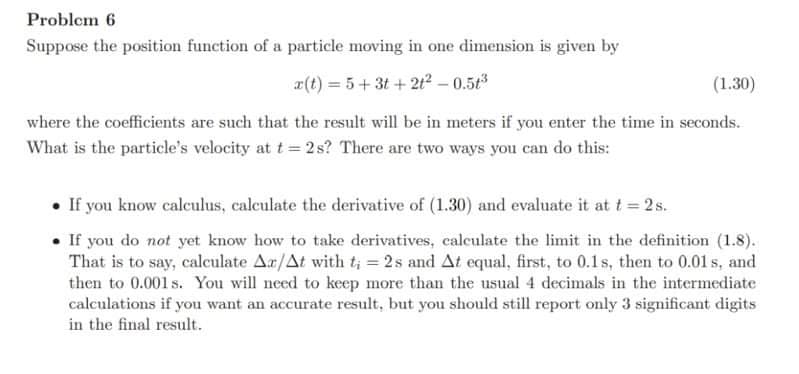Problem 6 Suppose the position function of a particle moving in one dimension is given by a(t) = 5+ 3t + 212 – 0.5t (1.30) where the coefficients are such that the result will be in meters if you enter the time in seconds. What is the particle's velocity at t = 2s? There are two ways you can do this: • If you know calculus, calculate the derivative of (1.30) and evaluate it at t= 2 s. • If you do not yet know how to take derivatives, calculate the limit in the definition (1.8). That is to say, calculate Ar/At with t; = 2s and At equal, first, to 0.1s, then to 0.01 s, and then to 0.001 s. You will need to keep more than the usual 4 decimals in the intermediate calculations if you want an accurate result, but you should still report only 3 significant digits in the final result.
Displacement, Velocity and Acceleration
In classical mechanics, kinematics deals with the motion of a particle. It deals only with the position, velocity, acceleration, and displacement of a particle. It has no concern about the source of motion.
Linear Displacement
The term "displacement" refers to when something shifts away from its original "location," and "linear" refers to a straight line. As a result, “Linear Displacement” can be described as the movement of an object in a straight line along a single axis, for example, from side to side or up and down. Non-contact sensors such as LVDTs and other linear location sensors can calculate linear displacement. Non-contact sensors such as LVDTs and other linear location sensors can calculate linear displacement. Linear displacement is usually measured in millimeters or inches and may be positive or negative.

Trending now
This is a popular solution!
Step by step
Solved in 2 steps


